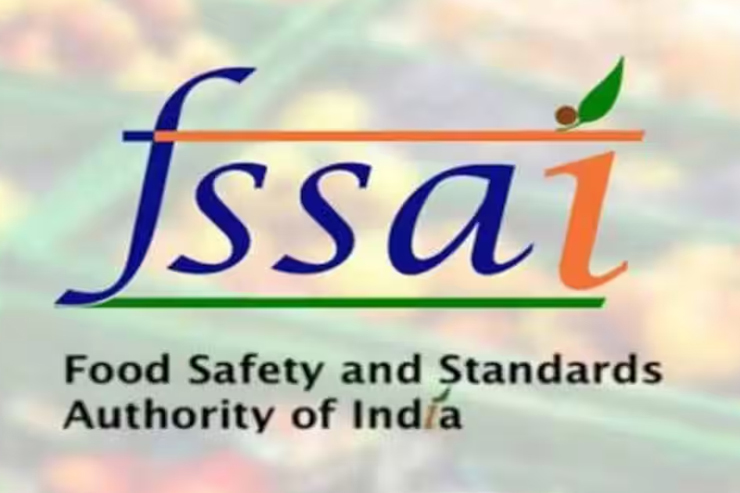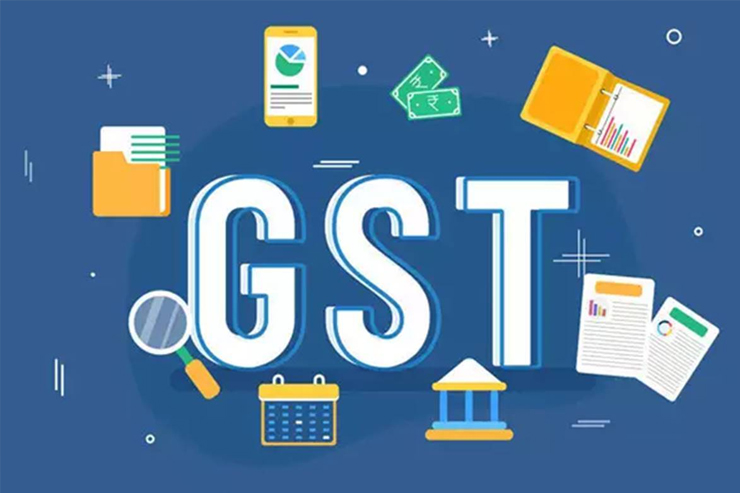

News Section
About us
The Courtkacheri.in is a Legal assistance firm in Mumbai which you can access 24×7 at the comfort of your home or office. Right from legal query to drafting legal forms such as various Agreements etc to fighting court cases or choosing lawyers, Courtkacheri.in is the one stop shop. We provide comprehensive consultancy on strategy planning, evaluating cost-benefit ratio, time-line plan to drafting plaints, drawing road map on pleading, scouting for best lawyers specific to your requirement and budgetary support . We are affordable & highly goal oriented professionals. Mainly solving the cases like Cheque bouncing cases Mumbai

Why Court Kacheri?
Happy Customers
Professional Experts
Reliable & Fast Service
100% Trustworthy
Experienced Lawyers
Trademark
Remove 'KindPan' from trademark registry ?

To seek the removal of the "Kindpan" trademark from the Indian Trademark Registry, you can initiate a rectification or cancellation request under specific provisions of the Trade Marks Act, 1999. The primary grounds for such a request include:
- Non-Use of Trademark: If the registered trademark has not been used for a continuous period of five years from the date of registration, it may be subject to removal.
- Lack of Bona Fide Intention: If the trademark was registered without any genuine intention to use it in commerce, and there has been no subsequent bona fide use, this can be a ground for cancellation.
Procedure to File for Removal:
- Application Submission: File an application for rectification or cancellation using Form TM-O with the Trade Marks Registry. This form is specifically designed for such purposes.
- Provide Evidence: Along with the application, submit substantial evidence supporting the grounds for removal, such as proof of non-use or lack of intent to use the trademark.
- Hearing Process: The Registrar will review the application and may schedule a hearing where both parties can present their arguments.
Decision: After evaluating the evidence and arguments, the Registrar will make a decision regarding the removal of the trademark from the registry.
It's advisable to consult with a trademark attorney to navigate this process effectively and ensure that all procedural requirements are met.
Sources
ACCIDENT LAWS

1) IPC 279 TO BNS 281
IPC Section 279 (Before 2023)
Title: Rash driving or riding on a public way
· Definition: Whoever drives any vehicle on a public way so rashly or negligently as to endanger human life, or likely to cause hurt or injury to any person.
· Punishment: o Imprisonment up to 6 months, or o Fine up to ₹1,000, or o Both · Nature of Offense: Cognizable, Bailable, Triable by any Magistrate.
BNS Section 281 (From 2024)
Title: Rash and negligent driving endangering human life
· Definition: Whoever drives any vehicle rashly or negligently in a manner as to endanger human life or likely to cause hurt or injury to any other person.
· Punishment: o Up to 6 months imprisonment, or o Fine up to ₹5,000, or o Both · Nature of Offense: Cognizable, Bailable, Triable by any Magistrate
|
Aspect |
IPC Section 279 |
BNS Section 281 |
|
Law Name |
Indian Penal Code (1860) |
Bharatiya Nyaya Sanhita (2023) |
|
Definition Scope |
Rash/negligent driving |
Similar language, slightly broader in phrasing |
|
Fine Amount |
Up to ₹1,000 |
Up to ₹5,000 (Increased) |
|
Imprisonment |
Up to 6 months |
Up to 6 months (Same) |
|
Intent |
Rash or negligent |
Rash or negligent (Same) |
|
Legal Reform |
Colonial-era law |
Part of modernized Indian laws |
|
Implementation Year |
In use until 2023 |
Enforced from 2024 onwards |
1) IPC 337 TO BNS 125 (a)
IPC Section 337 (Old Law)
Whoever causes hurt to any person by doing any act so rashly or negligently as to endanger human life, or the personal safety of others.
· Punishment: Imprisonment up to 6 months, or fine up to ₹500, or both.
· Type of Offence: o Cognizable o Bailable o Triable by any Magistrate
BNS Section 125(a) (New Law, 2023)
Whoever causes hurt to any person by doing any rash or negligent act so as to endanger human life or the personal safety of others. · Punishment: Imprisonment up to 1 year, or fine up to ₹10,000, or both.
· Type of Offence: o Non-cognizable o Bailable o Triable by any MagistratE
|
Feature |
IPC Section 337 |
BNS Section 125(a) |
|
Maximum Imprisonment |
6 months |
1 year |
|
Maximum Fine |
₹500 |
₹10,000 |
|
Cognizability |
Cognizable |
Non-cognizable |
|
Bailability |
Bailable |
Bailable |
|
Trial Court |
Any Magistrate |
Any Magistrate |
|
Intent Required |
Rash or negligent act |
Rash or negligent act |
|
Objective of Change |
Outdated penalties revised |
Penalty increased for deterrence |
1) Difference between IPC 338 TO BNS 125 (b)
IPC Section 338 (Indian Penal Code, 1860)
Title: Causing grievous hurt by act endangering life or personal safety of others: · Definition: When someone causes grievous hurt to another person by doing any act so rashly or negligently as to endanger human life or the personal safety of others.
· Essential Elements: o The act must be rash or negligent. o The act must cause grievous hurt. o It must endanger human life or personal safety.
· Punishment: o Imprisonment: Up to 2 years, or o Fine, or o Both
BNS Section 125(b) (Bharatiya Nyaya Sanhita, 2023)
Title: Causing grievous hurt by rash or negligent act.
· Definition: Mirrors IPC 338, but with updated language and potentially revised punishment. Focus remains on: o Grievous hurt caused. o Rash or negligent act. o Endangerment of life or personal safety.
· Punishment (as per BNS 2023): o Often similar or slightly enhanced compared to IPC, depending on legislative intent. o Likely remains:
|
Feature |
IPC 338 |
BNS 125(b) |
|
Enactment |
Indian Penal Code, 1860 |
Bharatiya Nyaya Sanhita, 2023 |
|
Terminology |
Older language |
Modernized legal language |
|
Structural Placement |
Standalone section |
Sub-clause under broader categorization |
|
Intent |
Rash/negligent act causing grievous hurt |
Same |
|
Punishment |
Up to 2 years/fine/both |
Likely same (subject to updates) |
|
Codification Purpose |
Colonial era criminal law |
Modernized, decolonized legal code |
1) Difference between IPC 304 (a) TO BNS 106
Section 304A of IPC (prior to BNS)
-
Does not amount to culpable homicide
-
Punishment: Up to 2 years or fine or both
-
Death caused b
Section 106 of BNS, 2023
-
Essentially same offence (rash or negligent act causing death, not culpable homicide)
-
Increased punishment: Now up to 5 years + fine is mandatory
| Point | Section 304A IPC | Section 106 BNS |
|---|---|---|
| Law | Indian Penal Code, 1860 | Bharatiya Nyaya Sanhita, 2023 |
| Nature of offence | Rash/negligent act causing death | Same |
| Max Punishment | 2 years or fine or both | 5 years + fine (fine is mandatory) |
| Culpable Homicide? | No | No |
| Change in Law | Not applicable | Updated under BNS |
CHEATING LAW

417 IPC & 318(2) BNS
Section 417 IPC – Punishment for Cheating
-
Provision under: Indian Penal Code, 1860
-
Nature of Offence: Cheating
-
Essential Elements:
-
Deception of any person
-
Fraudulently or dishonestly inducing that person:
-
To deliver any property, or
-
To consent that any person shall retain property, or
-
To do or omit to do anything which he would not do or omit if not so deceived.
-
-
-
Punishment:
-
Imprisonment up to 1 year, or
-
Fine, or
-
Both
-
-
Cognizability: Non-cognizable
-
Bailability: Bailable
-
Triable by: Magistrate
Section 318(2) BNS – Punishment for Cheating
-
Provision under: Bharatiya Nyaya Sanhita, 2023
-
Corresponding to: Section 417 IPC
-
Content: It is essentially the same as Section 417 IPC in terms of definition and ingredients.
-
Punishment:
-
Same as IPC: Imprisonment up to 1 year, or fine, or both.
-
-
Changes in BNS:
-
Though Section 318(2) BNS retains the same substance as 417 IPC, the section numbers have been reorganized.
-
In some cases, procedural aspects like classification of the offence (cognizable/non-cognizable or bailable) may be updated depending on accompanying general provisions under BNS.
-
| Aspect | Section 417 IPC | Section 318(2) BNS |
|---|---|---|
| Law Source | Indian Penal Code, 1860 | Bharatiya Nyaya Sanhita, 2023 |
| Section Number | 417 | 318(2) |
| Content/Definition | Cheating | Cheating (Same definition) |
| Punishment | Up to 1 year, or fine, or both | Same |
| Legal System Context | Old Criminal Code | New Criminal Code replacing IPC |
419 IPC & 319(2) BNS
SECTION 419 IPC:
Whoever cheats by personation shall be punished with imprisonment of either description for a term which may extend to three years, or with fine, or with both.”
Key Elements:
Cheating (as defined in IPC Section 415)
By personation – pretending to be someone else, whether real or imaginary. Up to 3 years imprisonment, or Fine, or Both
SECTION 319(2) BNS, 2023:
This is the direct successor to Section 419 IPC in the Bharatiya Nyaya Sanhita.:
“Whoever cheats by personation shall be punished with imprisonment of either description for a term which may extend to three years, or with fine, or with both.”
Key Elements & Punishment:
-
The wording and punishment remain almost the same.
-
The difference is in the structure and numbering due to the new criminal law framewor
| Aspect | Section 419 IPC | Section 319(2) BNS |
|---|---|---|
| Law Code | Indian Penal Code, 1860 | Bharatiya Nyaya Sanhita, 2023 |
| Offence | Cheating by personation | Cheating by personation |
| Punishment | Up to 3 years, or fine, or both | Up to 3 years, or fine, or both |
| Change | Original provision | Renumbered with minor structural modernization |
| Substantive Difference | None | None |
420 IPC & 318(4) BNS
Section 420 of IPC (Cheating and dishonestly inducing delivery of property)
-
Nature of offence: Cheating someone and dishonestly inducing them to deliver any property or to make, alter, or destroy a valuable security.
-
Punishment: Up to 7 years imprisonment and fine.
-
Cognizable: Yes
-
Bailable: No
-
Triable by: Magistrate of First Class
Section 318(4) of BNS (Equivalent to Section 420 IPC)
-
Under the Bharatiya Nyaya Sanhita (BNS), 2023, Section 318(4) corresponds to cheating and dishonestly inducing delivery of property, and it replaces IPC 420.
There is no real difference in substance between IPC 420 and BNS 318(4) — the BNS has reorganized and renumbered the provisions for modernization and clarity, but the offence remains substantially the same.
| Feature | Section 420 IPC | Section 318(4) BNS |
|---|---|---|
| Law | Indian Penal Code, 1860 | Bharatiya Nyaya Sanhita, 2023 |
| Offence | Cheating and dishonestly inducing delivery of property | Same |
| Punishment | Up to 7 years + fine | Up to 7 years + fine |
| Cognizable | Yes | Yes |
| Bailable | No | No |
| Effective From | Existing law (in force until June 2024) | 1 July 2024 onward |
| Major Difference | Old code | New code with modern language/structure |
FORGERY LAWS

468 IPC & 363(3) BNS
Section 468 IPC – Forgery for Purpose of Cheating
This section deals with forgery committed specifically with the intent to cheat.
Key Elements: The accused must forge a document or electronic record. / The intent must be to cheat.
Punishment: Imprisonment up to 7 years and fine.
Example: Creating a fake degree certificate to get a job.
Section 363(3) BNS – Aggravated Kidnapping or Abduction
This clause is part of a broader kidnapping/abduction section and deals with specific aggravated forms of kidnapping or abduction, especially if it’s done for particular purposes like murder, ransom, trafficking, etc.
Key Elements: Kidnapping or abduction is involved. / It is done with intent to commit certain grievous crimes like murder, ransom, trafficking, etc.
Punishment: More severe than simple kidnapping – may include life imprisonment or even death penalty, depending on the subsection and gravity.
Example: Kidnapping a child for organ trade or ransom.
| Aspect | Section 468 IPC | Section 363(3) BNS |
|---|---|---|
| Nature of Crime | Forgery with intent to cheat | Aggravated kidnapping or abduction |
| Type of Offence | White-collar/criminal fraud | Violent or coercive offence |
| Intent | To cheat using forged documents | To exploit, harm or extract ransom |
| Punishment | Up to 7 years + fine | Life imprisonment / death (in severe cases) |
| Bailable? | Non-bailable | Non-bailable (in aggravated forms) |
470 IPC & 340 BNS
The difference between Section 470 of the Indian Penal Code (IPC) and Section 340 of the Bharatiya Nyaya Sanhita (BNS), 2023 lies in their codification under two different laws—the IPC (old law) and BNS (new law which replaces IPC from 1st July 2024)—but both sections deal with the same offence: Forged Documents.
| Aspect | Section 470 IPC | Section 340 BNS |
|---|---|---|
| Title | Forged document or electronic record | Forged document or electronic record |
| Definition | Defines what is meant by a forged document | Almost same wording, defines a forged document |
| Focus | Clarifies that a “forged document” means a false document made with intent to commit forgery | Same focus, updated language in line with modern terms |
| Nature of Provision | Definition section – it supports other sections on forgery (like Sec 463-468 IPC) | Also a definition section, supports forgery-related provisions |
| Electronic Records | Includes electronic records as part of “documents” | Continues to include electronic records |
| Purpose | To clarify what counts as a forged document for prosecution under forgery offences | Same purpose in the BNS framework |
| Changes in BNS? | No substantial change in content | Slight modernisation of language, but no major change in substance |
471 IPC & 340 BNS
Section 471 IPC (Old Law)
Using as genuine a forged document or electronic record
If someone knowingly uses a forged document or electronic record as if it were genuine, they are punished as if they had forged it themselves.Same as for forgery (Section 465 IPC) — up to 2 years imprisonment, or fine, or both. If the document is more serious (like a will, valuable security, etc.), then punishment is harsher (Section 467 IPC — up to life imprisonment).
Section 340 BNS (New Law)
Using as genuine a forged document or electronic record
The section is virtually identical in substance to Section 471 IPC. It states that whoever fraudulently or dishonestly uses a forged document or electronic record as genuine, knowing it to be forged, shall be punished in the same manner as if they had forged such document
Depends on the nature of the forged document, similar to the IPC:
-
General documents: up to 2 years imprisonment, or fine, or both.
-
Serious documents (like valuable security, will, etc.): punishment as per corresponding forgery sections.
| Aspect | Section 471 IPC | Section 340 BNS |
|---|---|---|
| Legal Code | Indian Penal Code, 1860 | Bharatiya Nyaya Sanhita, 2023 |
| Applicability Timeline | Until June 30, 2024 | From July 1, 2024 onwards |
| Language & Format | Older legal drafting style | Simplified, modern drafting |
| Substance | Use of forged document as genuine | Essentially same |
| Numbering | Section 471 | Section 340 |
TRESSPASS LAWS

447 IPC & 329(3)BNS
Section 447 IPC (Old Law) – Criminal Trespass
Whoever commits criminal trespass shall be punished with imprisonment of either description for a term which may extend to three months, or with fine which may extend to five hundred rupees, or with both
-
Entry into or upon property unlawfully
-
With intent to commit an offence, or
-
To intimidate, insult or annoy the person in possession
-
Imprisonment up to 3 months, or
-
Fine up to ₹500, or both
-
Section 329(3) BNS (New Law) – Criminal Trespass (Revised)
-
Whoever commits criminal trespass shall be punished with imprisonment of either description for a term which may extend to three months, or with fine which may extend to five thousand rupees, or with both.
-
Key Elements (Same as IPC):
-
Same basic definition of criminal trespass
-
Entry with intent to commit an offence or to annoy/intimidate
Punishment:
-
Imprisonment up to 3 months
-
Fine up to ₹5,000 (increased from ₹500 under IPC)
-
Or both
-
Feature IPC Section 447 BNS Section 329(3) Law Indian Penal Code, 1860 Bharatiya Nyaya Sanhita, 2023 Definition Criminal trespass Criminal trespass (same core concept) Fine amount Up to ₹500 Up to ₹5,000 (increased) Imprisonment Up to 3 months Up to 3 months (same) Language/Structure Older style Updated for clarity Procedural Aspects Based on CrPC 1973 To be read with Bharatiya Nagarik Suraksha Sanhita, 2023
-
448 IPC & 329 (4) BNS
Section 448 IPC – House-trespass
-
Definition: This section punishes house-trespass, which is a type of criminal trespass involving unlawful entry into someone’s house, building, or property with intent to commit an offence, or intimidate/annoy/insult the person in possession.
-
Punishment:
-
Imprisonment: Up to 1 year
-
Fine: Or both
-
-
Nature of Offence:
-
Cognizable
-
Bailable
-
Triable by: Magistrate
-
Section 329(4) BNS – House-trespass
-
Definition: Section 329(4) of BNS 2023 replaces Section 448 IPC and similarly deals with house-trespass.
-
Punishment:
-
Imprisonment: Up to 1 year
-
Fine: Or both
-
-
Nature of Offence:
-
Cognizable
-
Bailable
-
Triable by: Magistrate
-
Aspect Section 448 IPC Section 329(4) BNS 2023 Source Law Indian Penal Code, 1860 Bharatiya Nyaya Sanhita, 2023 Section Title House-trespass House-trespass Language/Structure Traditional legal English Modernized legal language Substantive Change No major change in offence/punishment Same offence and punishment retained Purpose of Change — Reorganizing and simplifying the Penal Code
-
452 IPC & 333 BNS
Section 452 IPC (Indian Penal Code, 1860)
House-trespass after preparation for hurt, assault or wrongful restraint
-
-
Committing house-trespass.
-
Doing so after making preparations to:
-
Cause hurt,
-
Assault, or
-
Wrongfully restrain someone.
-
-
-
-
Imprisonment up to 7 years, and
-
Fine.
-
-
-
Cognizable, Non-bailable, and Triable by Magistrate of the first class.
-
Section 333 BNS (Bharatiya Nyaya Sanhita, 2023)
House-trespass after preparation for causing hurt, assault or wrongful restraint
(It’s a re-codification of IPC Section 452 with minor updates.)
(Same as IPC)
-
-
Committing house-trespass with preparation to:
-
Cause hurt,
-
Assault, or
-
Wrongfully restrain.
-
-
-
-
Imprisonment up to 10 years, and
-
Fine.
-
-
-
Cognizable, Non-bailable, and Triable by Magistrate of the first class.
-
Aspect Section 452 IPC Section 333 BNS Law framework IPC (1860) BNS (2023 – replaces IPC) Max punishment 7 years + fine 10 years + fine Language update Older legal terminology Modernized drafting Intent Same Same Nature of offence Cognizable, Non-bailable Cognizable, Non-bailable
-
454 IPC & 331(3) BNS
Section 454 IPC (Indian Penal Code, 1860)
Lurking house-trespass or house-breaking in order to commit an offence punishable with imprisonment
-
Essence: Applies when someone commits lurking house-trespass or house-breaking with the intent to commit an offence punishable with imprisonment.
-
-
Imprisonment up to 3 years
-
And fine
-
And if theft is committed, additional provisions may apply
-
Section 331(3) BNS (Bharatiya Nyaya Sanhita, 2023)
House-breaking in order to commit an offence punishable with imprisonment
-
Essence: Similar to Section 454 IPC, applies when a person commits house-breaking to commit any offence punishable with imprisonment.
-
-
Rigorous imprisonment up to 7 years
-
And fine
-
| Aspect | Section 454 IPC | Section 331(3) BNS |
|---|---|---|
| Law | Indian Penal Code, 1860 | Bharatiya Nyaya Sanhita, 2023 |
| Nature of Offence | Lurking house-trespass/house-breaking | House-breaking |
| Purpose | To commit any offence punishable with jail | Same |
| Punishment | Up to 3 years + fine | Up to 7 years (rigorous) + fine |
| Terminology Update | Uses “lurking house-trespass” | Streamlined to just “house-breaking” |
| Severity Increase | Lower maximum punishment | Increased punishment (up to 7 years) |




